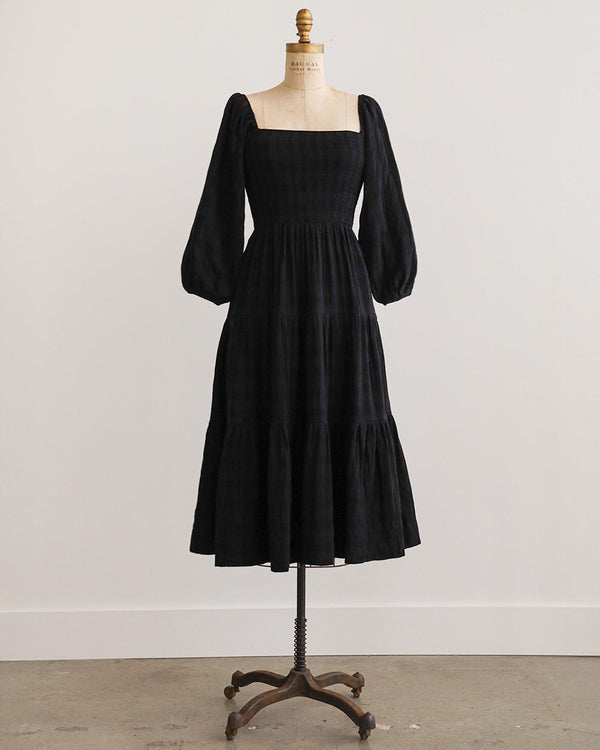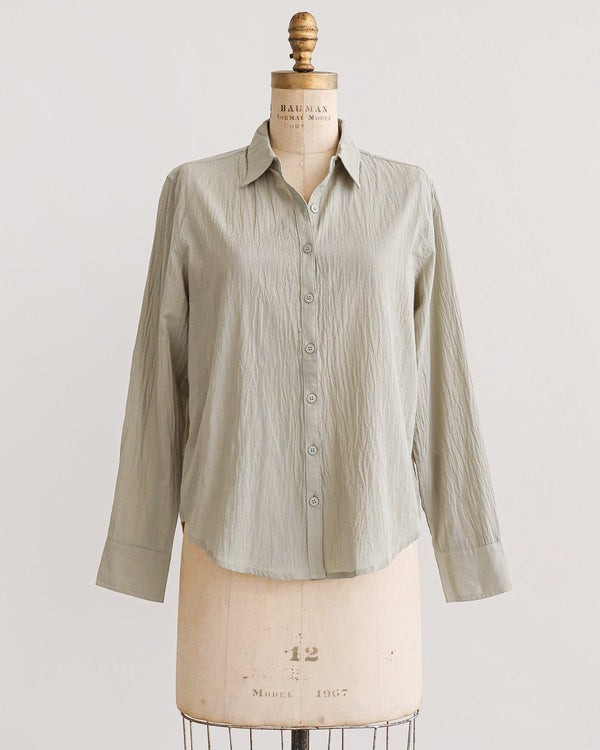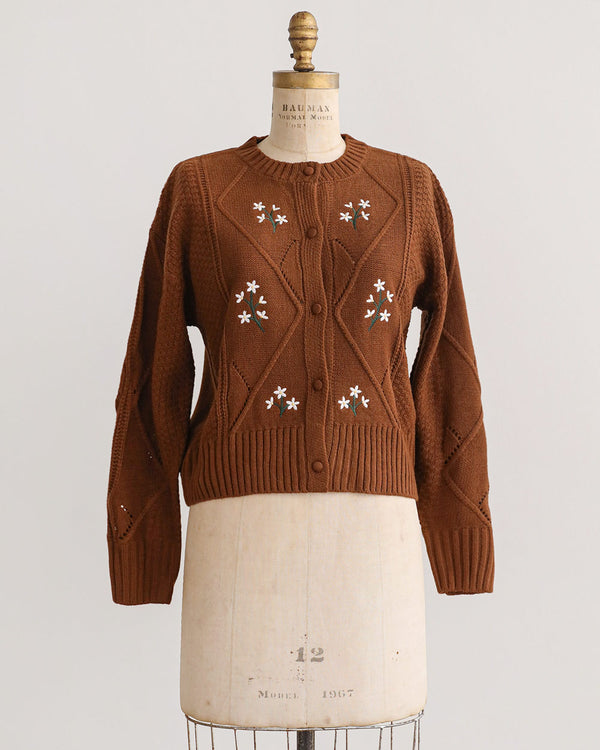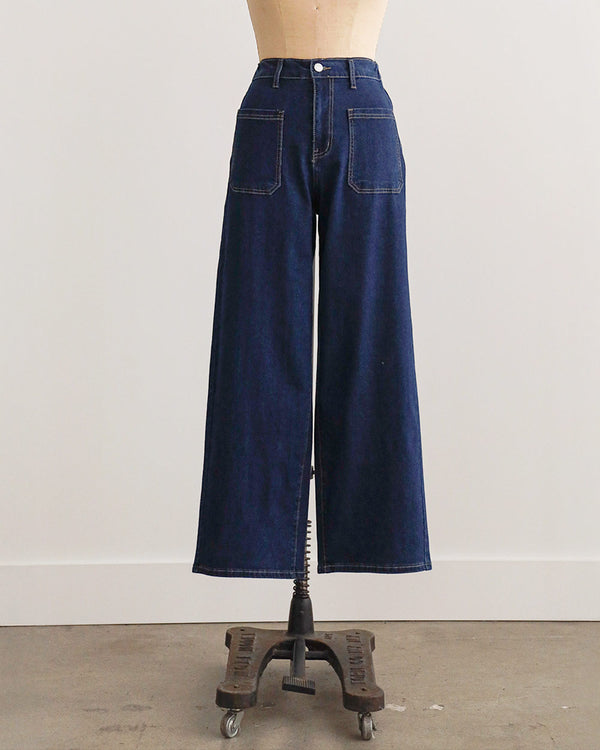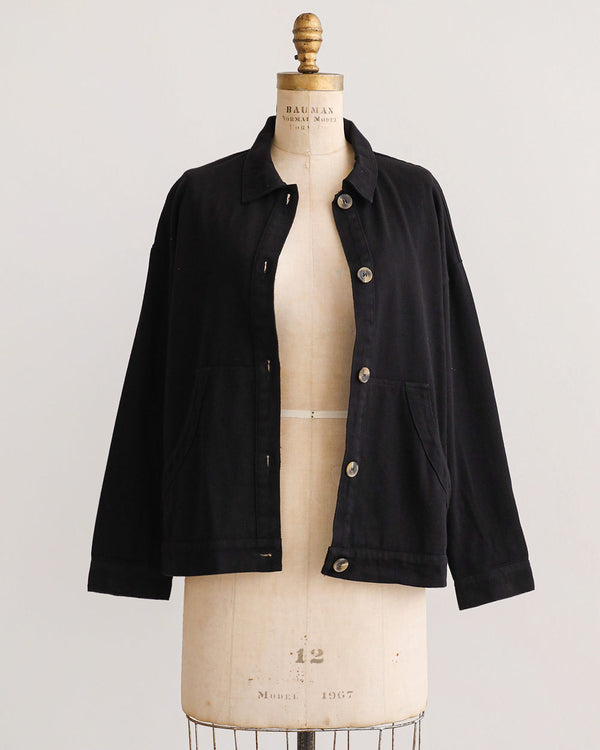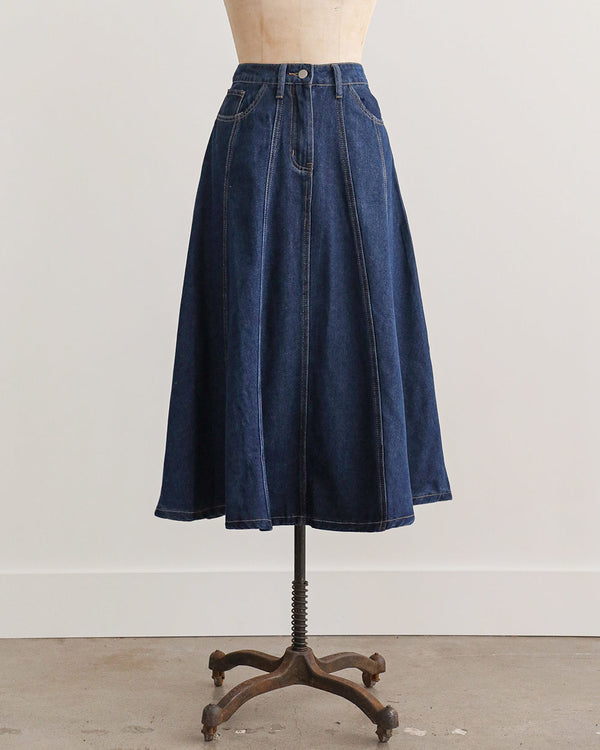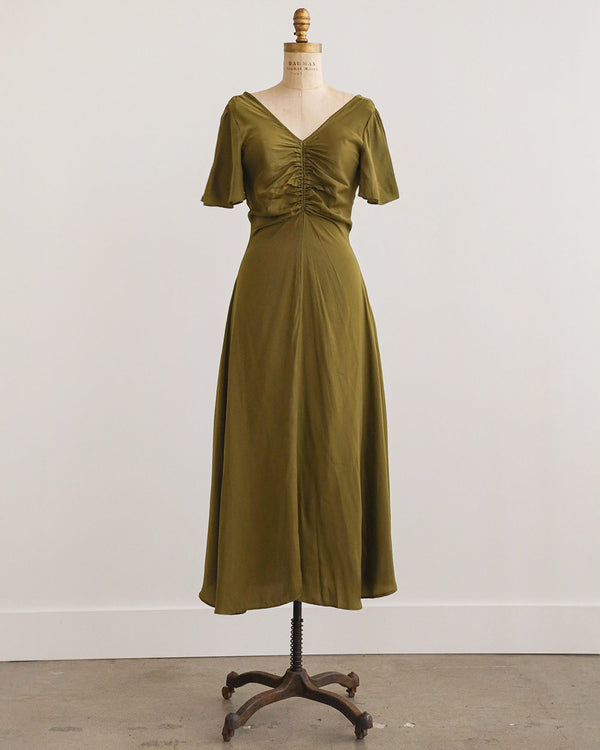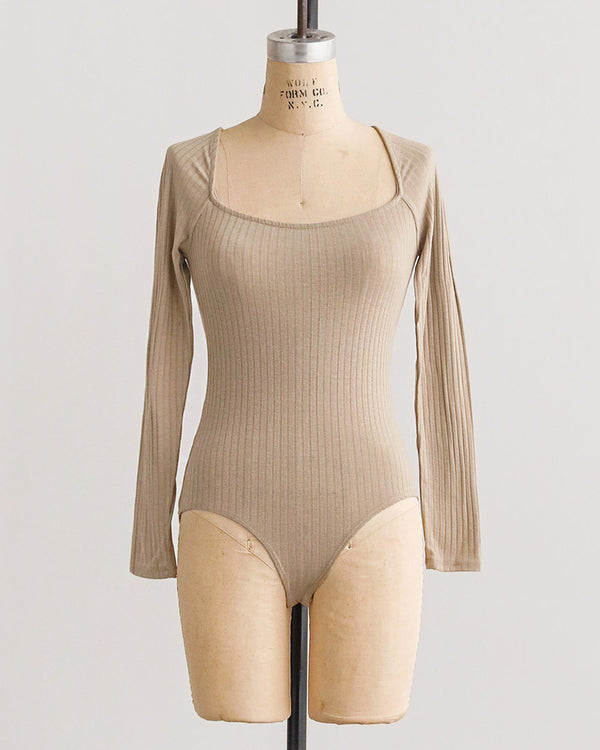Fashion Glossary: Vintage & Modern Lingerie
Publié par AV DEVON le
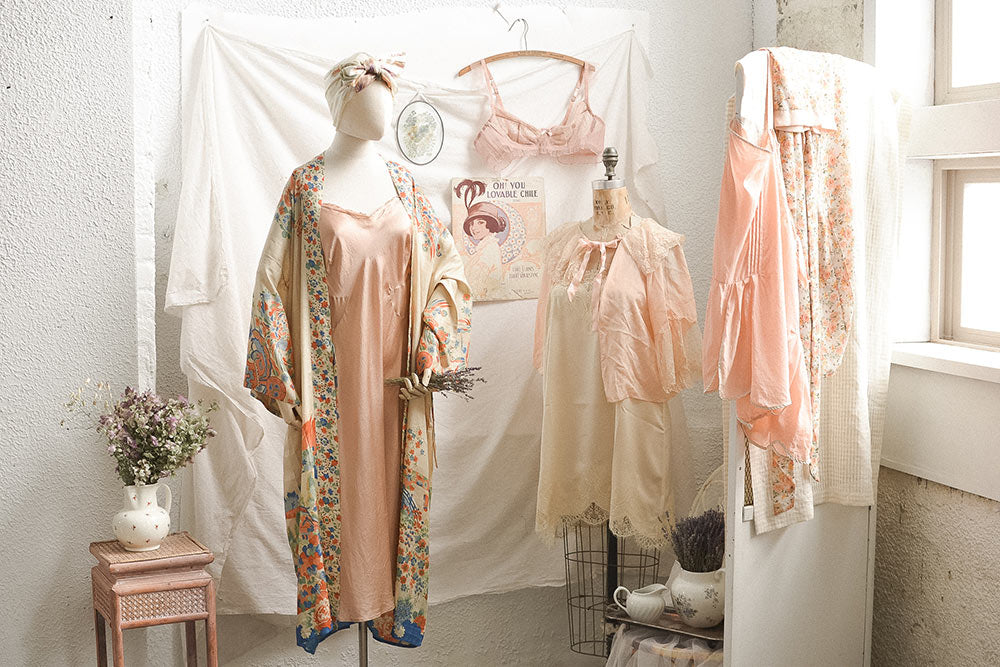
(featured photo should be overall lingerie photo)
Vintage and Modern Lingerie: An Intro
Lingerie, or underpinnings, have been an important part of dressing for centuries as a way to shape and support the body. It has evolved as often as the clothes worn over them, yet some of the terms used in previous eras have fallen out of style. Thus, we'd like to share some terms used to describe different types of lingerie that make the rounds in our shop as well as closets.
Below you'll find a list of terms used to describe different types of lingerie and lounge wear, along with some tips on how to measure and style them.
(photo of chemises, slips, step-ins, Slips)
Chemises, Slips, and Step Ins
Chemise/Teddy: A chemise or teddy is a loose fitting and short underdress or top that hangs from the shoulders and has a more uniform, less shapely silhouette. These were made popular during the the late 1910s when women were liberated from the constricting and highly feminine underpinnings of previous eras.
*Tip: How to Style - we like pairing chemises with high waist midi and maxi skirts
Slip: A full slip is an undergarment meant to be worn under a dress or an outfit like a top & skirt. Usually a slip has thin shoulder straps and a body skimming silhouette and is often adorned with feminine details like lace, ruffles, and delicate pleats. Vintage slips are usually made of nylon, though in the 1940s due to the war effort, many slips were composed of rayon. As the years progressed, slips were made of a combination of rayon, polyester, and nylon. Older slips dating earlier than the 1950s can be made of natural fibers like cotton and silk. Newer slips are usually made of polyester with a silk feel, nylon blends, and higher end slips can be made of silk and cotton blends. The benefit of a manufactured fiber slip is the ease of wash and care and less chance of wrinkling under your garments. A couple purposes for wearing a full slip is to prevent the showing of undergarments when wearing a semi sheer or sheer garment and to also protect the outer clothing from perspiration.
Step-In: The revolutionary undergarment made popular in the 1920s, step-ins are much like the chemise but with the fabric joining between the legs. Cut in a uniform, looser silhouette, these are easy to step into and pull the straps up over the shoulders without disturbing one's carefully coiffed pincurls. Typically made from silk or cotton in an array of soft pastel colors, and often accented with embroidered florals, ribbons and bows. In the evolution of lingerie, step-ins seem to have gone out of style, thus they are uncommon to find in more modern, synthetic fabrics.
*TIP* - Ensuring you find the right fit for a slip...you'll need to know these measurements: Length, Bust, Waist, and Hip.
(photos of bralettes, bras...)
Brassiere, Bra, Bralette
Brassiere: typically a structured, long-line bra made popular in the 1940s and 1950s. These were fashioned with wiring under or over the cups, sturdy seams around the bust and sometimes even boning at the rib cage, making the brassiere a sturdy and structured piece of lingerie that offered an element of shapewear. Often without straps, brassieres are useful for wearing underneath strapless dresses, or dresses that have low backs, that have a defined waist.
Bra: essentially, an undergarment for the bust that supports, while separating, the breasts. Originally patented by Mary Phelps Jacobs as the first "Brassiere" in 1914, when she created a make-shift bra out of hankies she had sewn together in a rushed effort to appear sleek and streamlined one evening at a social event. Since then, the bra has had many an evolution, going from soft fabric cups in the 1920s to the structured underwired garments we are familiar with today. In its origins, bras were most often made from silk. As time went on, and mass-manufacturing became popular, bras made their debuts in all sorts of natural and synthetic, or mixed, materials.
Bralette: a soft cup undergarment for the bust, usually made from two triangles of fabric and held together by elastic and fastened by hooks & eyes behind the back. Made from silk, cotton, nylon, polyester, or spandex, bralettes have become a popular choice for women who want support without the constrictive structure and rigidity of wired bras. When shopping: consider the measurements of the bust, and the dimensions of the fabric cups to see how they might cover your specific chest. Also consider the underbust measurements, to gauge if the elastic or fabric that runs beneath the breasts will fit snugly, but comfortably.
*TIP* - To ensure a proper fit, we offer various measurements on our bras and bralettes: Length, Bust, Bodice, Cup Length & Width. We will include the cup size when applicable.
(photo of bloomers/tap shorts...)
Panties, Bloomers, Tap Shorts
Panties: closely fitted, soft and lightweight undergarment made to cover the bottom and groin. Preferably made from natural and breathable fabrics such as cotton to maintain comfort and hygiene. However, panties are often made from synthetic fibers such as nylon, polyster and spandex too, for more decorative, sports-focused, and cheaper options. Whether the style is bikini, cheeky, brief or thong, panties are a glorious garment for protecting one's private bits with comfort and mobility.
Bloomers: historically loose-fitting pantaloons for children and women, the lightweight and divided-leg undergarment was coined bloomers mid 19th century for their most staunch advocate, womens-rights activist Amelia Bloomer*. Opposed to the heavy and restrictive layered petticoats that women were accustomed to, bloomers become a staple for women who wished to to have an ounce of the freedom, comfort, and mobility of their male counterparts. Bloomers were useful for keeping one's modesty as well as hygiene. Made of lightweight cotton, bloomers originally were loose-fitting and gathered below the knee with ribbon or drawstring. As time progressed and hemlines rose, bloomers evolved into a shorter undergarment, gathered and finished above the knee, or mid thigh, and eventually where at the very top of the thigh, right beneath the buttocks. The most defining characteristic of bloomers as opposed to panties or shorts is their loose shape, and the gathering of the fabric at the waist and the leg.
Tap Shorts / Tap Pants: made popular in the 1920s, tap pants are a predecessor to the panties. Most often made from silks or rayon in an array of soft pastel colors and accented with embroidery or ribbon bows, tap pants were fitted at the waist and left loose around the legs for movement. Best when worn with a similarly styled bralette or brassiere to make for a very attractive lingerie ensemble.
{photo of petticoats)
Petticoats & Half Slips
Petticoat: an important component of historical dressing throughout the ages, the petticoat is essentially a skirt worn as a foundation beneath other layers and ending anywhere from knee length to floor length. Petticoats have been trusted as very practical additions to most outfit, whether for adding warmth, modesty, or to fill out the shape of dress or skirt. Often made from lightweight cotton fabrics or heavier wool during colder seasons, petticoats can be left plain or adorned with ribbons and embroidery.
Half Slip: similarly practical to the slip, the half slip is a simple and light weight layer worn underneath sheer dresses and skirts for modesty. Fashioned out of silk, cotton, nylon or polyester, the half slip is typically gathered at the waist with elastic or fixed with buttons, and ends anywhere from mid thigh to right below the knee.
(photo of pajamas & nightwear)
Pajamas, Nightgowns & Loungewear
Pajamas: made popular in the 1920s as a more comfortable option for men's sleepwear, women quickly took to the trend and found pajama sets to be a chic and practical solution to the tangle of fabric that nightgowns had become begrudged as. Fashioned to emulate shirts and trousers of the day, the soft and comfortable pajama sets became a favorite choice for sleeping, lounging about one's home and even wearing at the beach for a breezy, luxurious ensemble. Often made from silks in satin and crepe weaves, light weight cottons and heavier wool flannels for extra warmth. Though nowadays, pjs are also easily found in a range of synthetic fibers as well. Whether they're plain and simple, made from a decorative print and trimmed with silk piping, slipping into one's pajamas has become a nightly ritual of comfort and relaxation for children and adults around the world.
Nightgowns: a well loved and utilized garment throughout the ages, the nightgown can be simple or ornate, lightweight or heavy duty, and modest or risque in all varieties. Whereas the slip has the purpose of being worn inconspicuously underneath other clothing, the night gown is purely worn for the home and bed. In most vintage shops, you'll often find night gowns from the mid 1800s to the late 1900s and on.
(photos of negligees and robes)
Negligees & Bathrobes
Negligee/Peignoir: literally meaning "neglected" in French, this is typically a sheer and long garment worn over slips and nightgowns, and reserved for lounging about at home or in the bedroom. Commonly made from a filmy soft and sheer synthetic material such as nylon or polyester, the negligee or peignoir is worn as a dressing robe and fastens in the front with ribbon ties at the neck or a line of buttons down the bodice.
House Robe: typically a more modest robe to wear around the home. With a sash that ties around the waist and perhaps a patch pocket or two at the breast and the hips. Often made out of wool or cotton, layered or quilted for the colder seasons, or a lightweight cotton or terry cloth when it is warmer.
Bathrobe: most often made out of terry cloth (the same cotton material as bath towels) and wraps around the body to be tied at the waist. Modern bathrobes also come in a variety of synthetic fibers, such as a thick velvety polyester.
Kimono: a traditional gender neutral Japanese garment that has been an integral part of Japanese culture for centuries. Often embellished with beautiful sweeping designs of landscapes, flowers, buildings, and animals. Since entering Western fashion in the 19th century, the kimono has become a staple for 1920s flapper and art nouveau romanticists alike, along with being favored by modern designers. Traditional kimonos are made from silk, linen, hemp and blends, while modern kimonos can be found in a wide variety of synthetic materials.
(photo of bed jackets)
Bed Jackets: a short and light weight garment worn about the shoulders for modesty or warmth, often paired over matching slips and nightgowns. Bed jackets might have sleeves or are fashioned more like capes. They might have pockets or simply delicate embroidery and lace adornments. Older bed jackets from the 1940s and earlier are typically made from silks and cottons and in light pastel colors. More modern bed jackets from the 1950s onward might be made from a polyester or nylon blend.
Bra: Mary Phelps Jacob, http://www.phelpsfamilyhistory.com/bios/mary_phelps_jacob.asp
Bloomers: Amelia Bloomer: https://www.womenshistory.org/education-resources/biographies/amelia-bloomer



